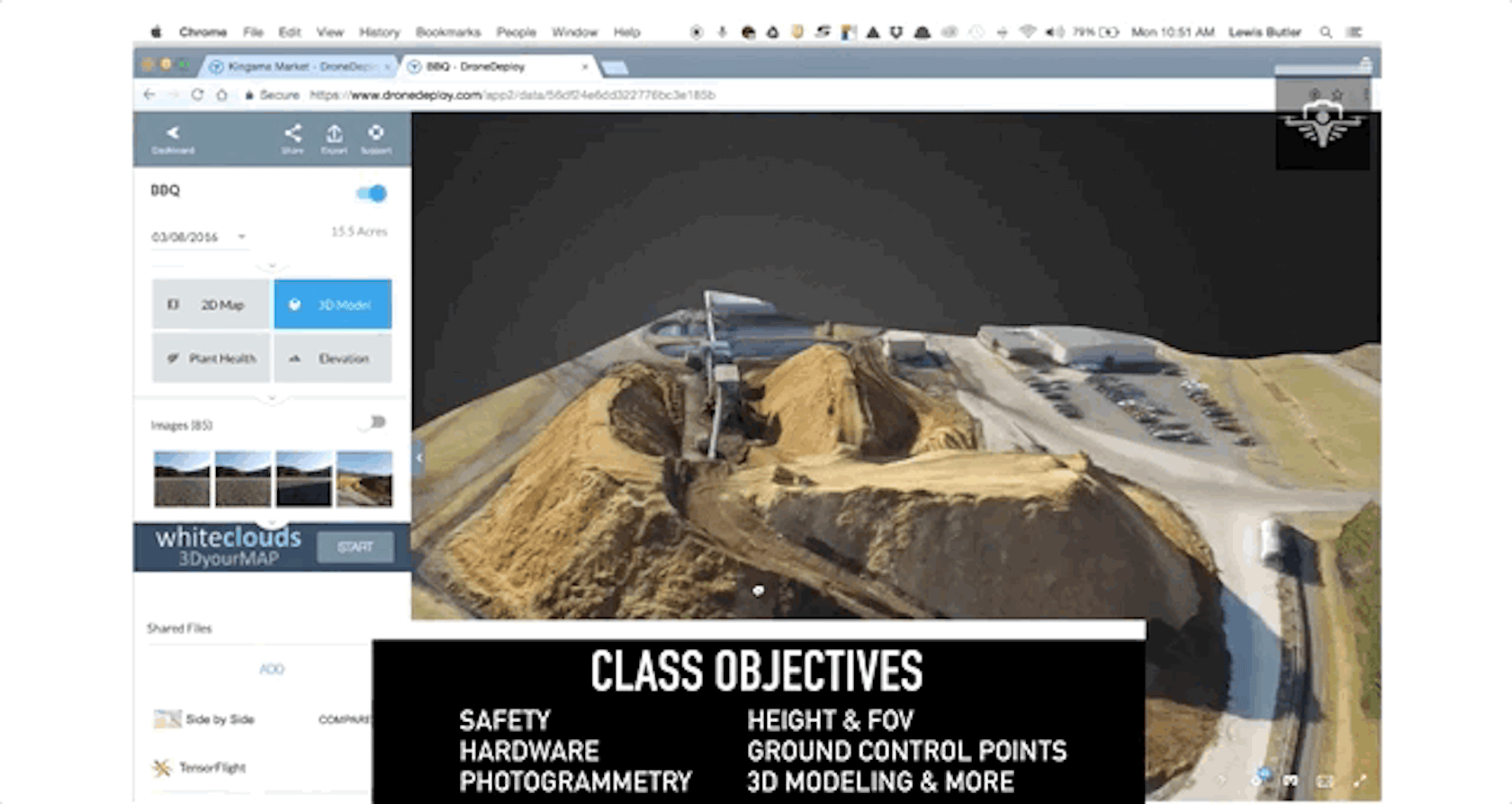This article is part of an ongoing series of shared content through our partnership with Architizer, a marketplace, resource, and community that connects architects to their peers, fans, and potential clients. You can find the original article here on the Architizer blog.
Drones can do a lot more than just take sweet pics. Ten years ago, it would have been laughably unrealistic, but now they are in daily use on construction sites around the world. Thanks to advances in miniaturization in the early 2000s, drones, also known as unmanned aerial vehicles (UAVs), have exploded over the past decade, and new investment is heating up the pace of change.
Drones aren’t building buildings yet (although that’s not as far away as you may think), but contractors and large AEC firms like AECOM are regularly using them to survey sites, monitor resources and track project progress. Of course, everyone is using them to photograph buildings from the sky; that’s already old news. If you’re just using drones to take pictures, sorry, but you’re already behind the curve. And if you haven’t used a drone at all, well … the ’90s called, and they want their architect back.

A drone-generated 3-D model for engineering services company AOC Ingeniería of a site in Ecuador generated by senseFly
OK, OK, it is possible to be a thoroughly modern designer without using UAVs, but drones are radically transforming the way construction firms work. Current models are still too weak to carry heavy materials, but they can easily carry very powerful cameras. Using photogrammetry, images from these cameras can then be stitched together to create a full-color digital model of the site at a resolution equal to or better than traditional surveying techniques.
The turnaround between scan and result isn’t quite instantaneous, but for especially large and complex sites, it can turn a job that would take weeks into a single-day operation. It’s a lot easier to fly a drone over a miles-long mining site that spans mountains and ravines than it is to send in a team of surveyors.
Introducing Perimeter Scan from 3D Robotics
If you’re interested in using a drone, you don’t need to go out and buy one on your own and become an expert in a totally new piece of technology. A growing number of companies offer a range of drone-related services, from operation to data processing, and a few companies have started to produce packages marketed directly to the construction industry.
Companies like Kespry and senseFly offer drones that are relatively easy to use and come with full-support packages so that, ideally, all the customer has to deal with in the end are ready-to-use 3-D models. An article published last year in Fortune reported that the software doesn’t work totally smoothly yet, but with Autodesk moving into the space, tech is likely to get a lot more user-friendly for the building industry. In 2015, the software giant made an investment in Skycatch, a drone software and hardware producer marketed toward construction, and Autodesk has also since invested in 3D Robotics to further develop software.

Drone control interface for site scanning from DroneDeploy, image via UAV Coach

A site scan and resulting digital model, image via UAV Coach
There’s a lot of potential for this kind of surveying technology. Companies like DroneDeploy are already using it to 3-D-scan buildings, which, as resolution gets better, could be used to monitor construction progress and reconcile the site with a design model. AECOM already uses drones to monitor the amount of raw materials like sand and gravel on-site. Lightweight sensors can also be mounted to drones to monitor temperature and other material properties, expanding the data points architects can track.
Results of a building scan done by drone, image via UAV Coach
As radical as it may be to use drones to scan a site, many architects dream of using UAVs to actually build a building. Researchers at ETH in Switzerland have used small drones to construct small pavilions, either by lifting bricks one by one into a wall or using drones like flying spiders to weave a fabric bridge. These are still just small experiments, but given the rate at which drone technology has advanced in the past decade and the amount of money being invested in the area, it’s likely that today’s pipe dreams will be tomorrow’s reality.

Left: ETH drones that weaved a bridge from string, image via Tech Xplore; right: ETH Flight Assembled Architecture that laid bricks using drones, image via ETH

